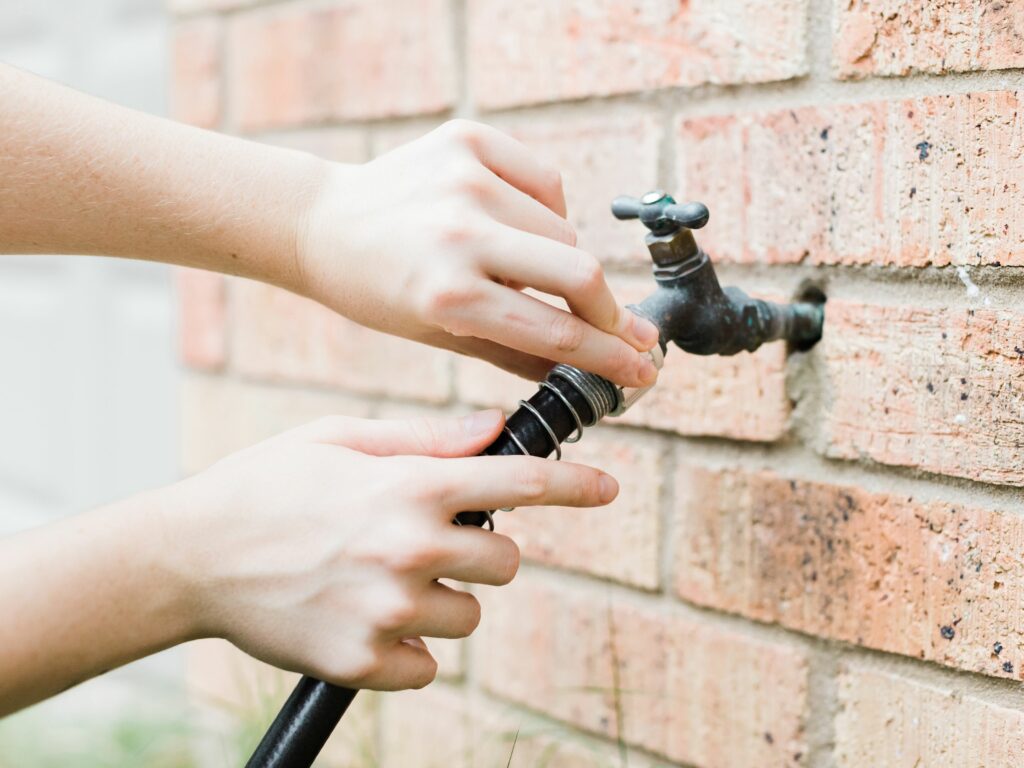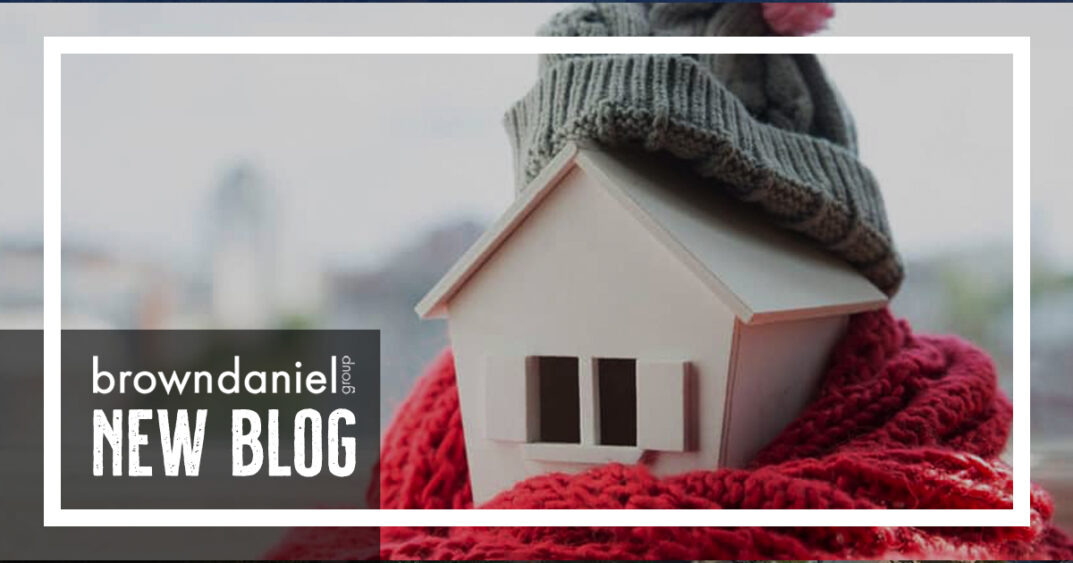
Are you selling an already vacant home? If you have a rental property sitting empty, it makes sense that you might want to offload it during this currently ultra hot real estate market. Or perhaps you’ve purchased a new home and moved before selling your previous one. In both scenarios, you may be faced with a significant length of time that your house will remain empty over the winter. If this is the case, you will need to take steps to prepare your home for it’s winter hibernation. The same is true if you are a snow bird, preparing to travel south for the winter to warmer climates. You will still need to get your primary home ready to sit empty while you are away. Whatever the reason, you will need to winterize any home that will be vacant and unsupervised for an extended period of time during the winter months.
What is Winterization?

Winterization is the process of removing water from the pipes of your home, usually by draining the supply lines that bring water to you. It also involves introducing antifreeze into the pipes to prevent any water that remains from freezing when the temperatures dip down low. Why is this necessary? Because if water remains in your home’s pipes, it could freeze causing them to burst. When water freezes it expands, and since water supply lines are already pressurized, any water remaining in pipes can freeze and cause the pipes to expand and rupture, leading to property damage on top of an expensive plumbing disaster.
Burst pipes are an even bigger issue with a home that is sitting empty. When you are home you can follow the usual process of allowing one or more faucets in your home to drip while temperatures are below freezing. The constant movement of even a small amount of water, such as from a slow drip in a kitchen sink, will keep the water from freezing in your pipes. If you aren’t home to take care of this, your home is in danger. Also, if no one is checking in on your home regularly, a significant and expensive amount of damage may have already occurred by the time the busted pipe is discovered.
Winterization Steps

There are a few steps you need to take to prepare your home to sit empty throughout the winter:
- Power Down Your Furnace. Just turning off the electrical power to your furnace will power it down. Most homes are built so that the furnace is on it’s own circuit, so you can turn it off at the breaker to be sure a power outage or surge doesn’t cause an automatic thermostat to power back on. In older homes, it may take a little bit of trial and error to determine the correct circuit if the box is not clearly labeled.
Empty Your Pipes. You can do this by closing the main water shut-off in your home. The shut-off is usually located either in the basement or laundry room of most homes. Once this is done, turn on every faucet in the house in order to drain them of water. Don’t forget your exterior faucets as well.- Power Off and Drain Your Water Heater. If you have a natural gas powered water heater, do this by turning off the gas valve. If your water heater is electric, turn off the power at the switch. Once this is done, you should drain all water from the water heater by connecting a hose to the drain at the bottom of the appliance and routing your hose to the nearest logical water receptacle. If you have a nearby drain, such as in a shower, sink or bathtub, this should be an easy process. If your water heater is not located near a bathroom or laundry sink, you can also choose to run the hose outside of an exterior window or door. If none of these options make sense for your home’s layout, you may need to enlist some helpers and form a “bucket brigade” to remove the water. Once all of the water has been drained, close the drain valve.
- Drain Toilets. In order to winterize your toilets, you will need to go through a few steps to make sure the water has been removed. First flush the toilet, then take the lid off of the tank and sponge any excess water out of the tank. Using a large measuring cup or other similar tool, scoop all of the water out of the bowl. Luckily you’ll have a sink or shower nearby for getting rid of all of this water! After the water has been removed, add diluted non-toxic propylene glycol antifreeze. But be forewarned – this is not the same product as automobile antifreeze. This particular product works differently, but it can be found at your local hardware store or even ordered from Amazon. For each toilet in your home, you will need to follow the same steps in order to make sure no water is remaining.
- Protect Your Pipes. Wrap any exposed pipes and outside faucets in insulation. This will protect them in case any water remains in these vulnerable pipes that are more exposed to the elements.
- When in Doubt, Call a Professional. If any of these steps seem like larger tasks than you are comfortable handling, call your plumber and request a winterization service for your home. Allowing a trusted professional to take care of some or all of the work may be easier, and cheaper in the long run if you aren’t confident in your abilities. Professional plumbers have specialized equipment for performing all of these tasks, including air compressors that help flush the water lines.
Non-Water Recommendations

Not every step you should take before leaving your home vacant involves the pipes. Another important step you should take is to unplug all of your appliances and electronics before you lock up your home. When your home will be sitting vacant for an extended period of time, you will want to unplug even the larger appliances that you would usually leave hooked up all of the time. Unplug your washing machine, range, microwave and refrigerator (after emptying it of course). This will help you avoid the risk of fire, as power surges and wiring issues that might come to light if you were present could be overlooked indefinitely when no one is home.
De-Winterizing Your Home

When it is time for your home to be occupied again, you will need to complete the steps of de-winterization, whether you are returning from your winter away or preparing a vacant home to enter the market for showings. Follow these steps for de-winterization:
- Open the Main Water Valve. Open the water line back up, then go to one sink or bathtub in your house and turn the water on. Once the water begins to flow from the cold water faucet, turn it off and leave only the hot water faucet on until water begins flowing from it as well. When you have hot water at this faucet, it will indicate that the water heater has filled successfully. You can now repeat the process at all other water sources in your home to fill the water system and make sure everything is flowing correctly.
Turn on Your Water Heater. This should be done second, after turning on your water and filling your water heater’s tank as described above. Especially if you own an electric water heater, the tank of the water heater must be refilled before restoring power, or else you may unwittingly damage the heating element.- Flush All Toilets. The reasons for doing this are twofold. Flushing will restore water flow to the toilets in the same way that you have restored it to the faucets and sinks in your home. Additionally, this will flush out all of the antifreeze you poured in weeks or months ago.
Preparing for Shorter Periods of Vacancy

What if your house will only be sitting empty for a few weeks during the winter, rather than for a few months? You do not need to go through all of these steps, as long as you have a trusted friend or family member who can check in on your house frequently, and who can monitor for any serious problems that could arise from the plumbing system. If you are able to have your home supervised in your absence, you can leave your furnace running. Instead, set your heat to between 55-60 degrees. This will prevent your home from getting so cold that a mild freeze can burst pipes. Keeping your home’s systems running at or near room temperature can prevent the need for costly repairs later.
You should still disconnect the water and power supply to your washer and dryer (if electric), even if you have someone looking in on your house periodically. The leaks that can arise from washing machines often start small and slow, but can turn into a large problem over time. Also, you should consider having a water flow sensor and low temperature sensor installed on your main water supply pipe. These sensors report back through an app on your phone, so that you can constantly monitor the water situation in your home. You will be alerted with an alarm about any pressure changes that should be attended to.

